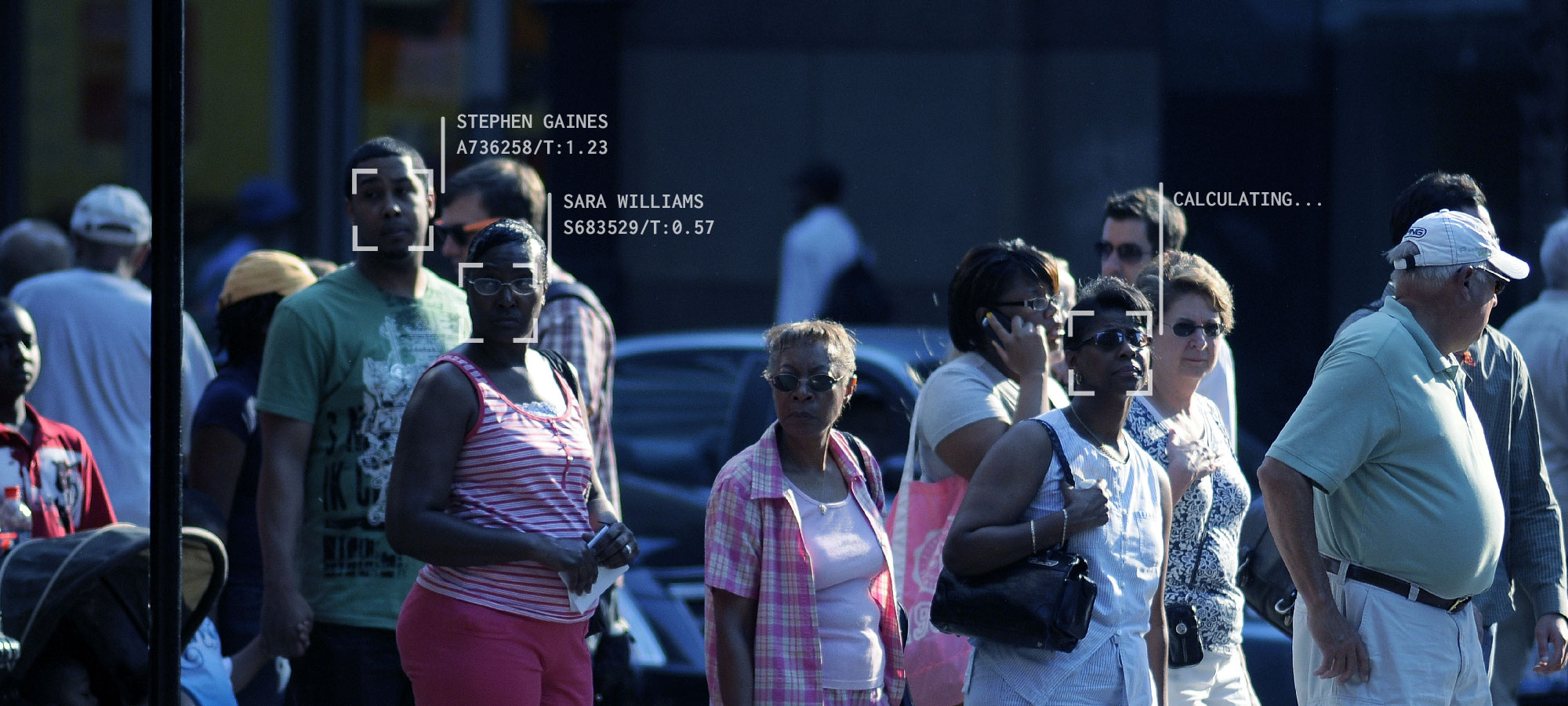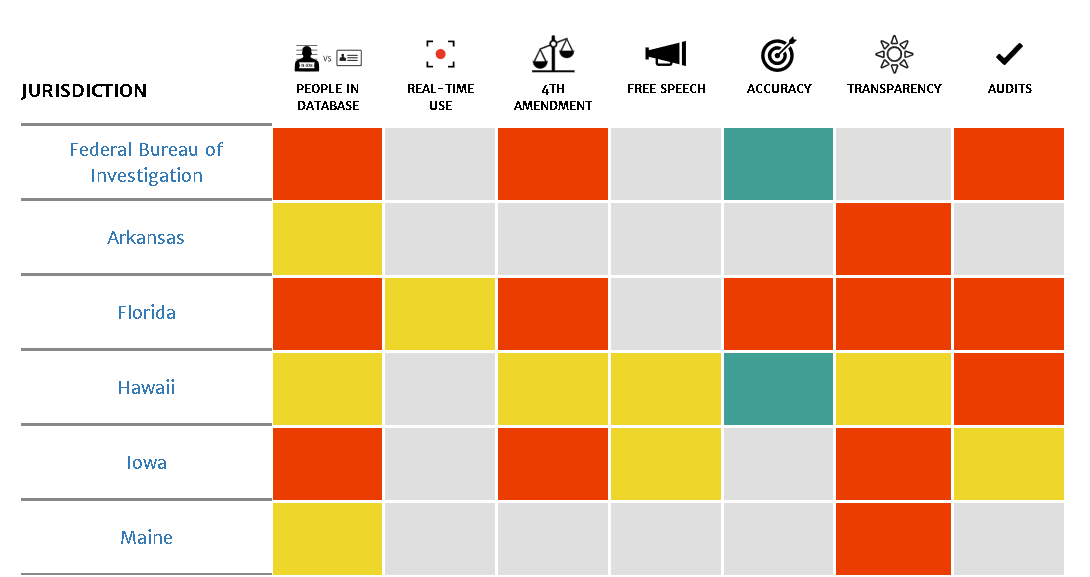 Back to Case Studies
Back to Case Studies
Location
Washington, D.C.
Privacy and civil rights advocates have long been warning that the rapid development of facial recognition technologies will lead to the technology’s misuse without requisite laws and oversight mechanisms. Due to the patchwork nature of data on state, local, and federal use of facial recognition technologies, these warnings were previously supported by anecdotal evidence or the occasional statistic buried deep in a government report.
Law enforcement face recognition networks include over 117 million American adults.
That all changed in October of 2016 with the Georgetown Law Center on Privacy & Technology’s release of “The Perpetual Line-Up: Unregulated Police Face Recognition in America,” a pathbreaking report which leveraged over one hundred public records requests to reveal the scale and nature of law enforcement’s use of facial recognition technologies. By centralizing previously diffuse data, systematizing that data in a powerful scorecard, and presenting tenable recommendations for a variety of stakeholders, this report has done much to advance the nationwide conversation on government use of facial recognition technology.
 No state has passed a law comprehensively regulating police face recognition.
No state has passed a law comprehensively regulating police face recognition.
Most laws and oversight mechanisms governing the conduct of law enforcement were designed for an age before facial recognition’s rapid evolution and proliferation. Unlike traditional methods of biometric tracking, such as fingerprint identification, facial recognition can be utilized automatically and at scale without the targets’ knowledge. While this development can and does aid in legitimate law enforcement activities, an absence of oversight opens the possibility for profound abuse.
Compounding this challenge is the decentralized nature of information about local, state, and federal law enforcement’s use of these technologies. A lack of transparency, and in some cases, a deliberate obscuring of the true nature of facial recognition’s role in law enforcement practices mean that it is difficult for privacy advocates, let alone the average citizen, to understand how these technologies impact their communities.
 The report’s “Facial Recognition Scorecard” assesses twenty-five agencies across seven metrics.
The report’s “Facial Recognition Scorecard” assesses twenty-five agencies across seven metrics.
By combing through over 15,000 pages of requested public records, interviewing members of industry, bureaucracy, and law enforcement, and surveying a number of state biometric laws, the authors of the report were able to piece together a comprehensive view of the extent and manner of law enforcement’s use of facial recognition technologies. In addition to finding that about half of American adults are in law enforcement facial recognition networks, the authors discovered that, for the most part, law enforcement’s use of these technologies are not guided by internal or external quality checks, audits, or regulations. The report also found that the manner in which these technologies are currently being employed disproportionately impacts African-Americans.
Beyond simply presenting these statistics with compelling anecdotes, the authors of the report created a new risk framework for law enforcement use of facial recognition, comparing twenty-five local, state, and federal agencies across seven key metrics. These metrics are accompanied by recommendations to legislators, law enforcement, federal bureaucrats, members of industry, and community leaders. Significantly, this report includes a piece of model facial recognition legislation based on meticulous research and consultation.
Upon the report’s release, its findings were covered in numerous outlets such as Washington Post, New York Times, and NPR. Public discourse surrounding law enforcement’s use of facial recognition technology has been spurred by the report, with journalists, advocates, and policymakers still invoking the report’s key findings and recommendations almost four years after its publication. Significantly, the report compelled the United States House Oversight Committee to hold a series of hearings on the FBI’s use of facial recognition at which two of the report’s authors, Clare Garvie and Alvaro Bedoya, testified at length.
In 2017, the report’s piece of model legislation was put forward in the state of Maryland as House Bill 1148, or the “Face Recognition Act.” That same year, Vermont’s chapter of the ACLU leveraged the report’s findings to successfully lobby the state’s Attorney General’s Office to demand local law enforcement discontinue the use of facial recognition on driver’s license photos. In December of 2019, the National Institute of Standards and Technology (NIST) implemented the report’s recommendations, modifying its facial recognition vendor testing regime by adding regular tests for demographic bias.
The report has been followed by a number of other investigations on the impacts of the widespread use of facial recognition technologies, and the Center will continue to investigate this vital issue.